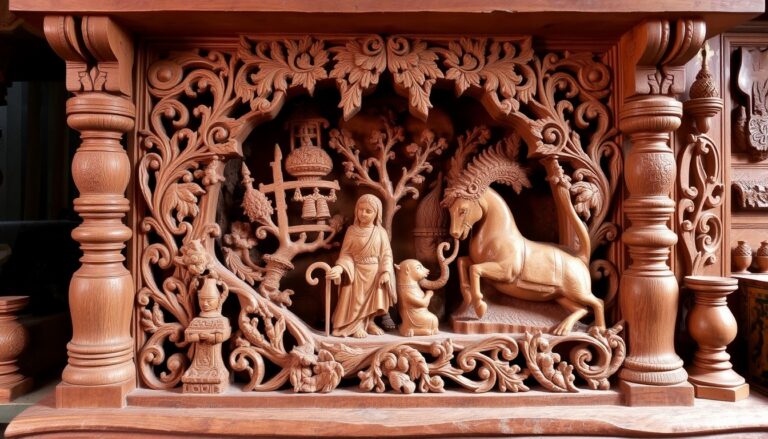Just when you think of the enchanting region of Kashmir, the mesmerizing landscapes and the serene Dal Lake might come to your mind. However, you should also consider the rich cultural heritage, especially the exquisite tradition of wood carving. This ancient craft has a profound significance and a long history, reflecting the Kashmiri people’s artistic brilliance and cultural nuances. If you want to understand the tradition deeply, let’s investigate the intricate world of Kashmiri wood carving.
Kashmiri wood carving dates back to the 14th century, showcasing a blend of Persian and Indian influences. As you explore this craft, you will notice that artisans often use wood from the local walnut tree, praised for its durability and beautiful grain. The process begins with selecting high-quality wood, which is seasoned to prevent warping. This careful selection underscores the artisans’ devotion to quality and tradition, something that resonates deeply with the cultural identity of Kashmir.
As you observe the craftsmanship, you will be amazed at how each piece begins as a simple log before transforming into a magnificent work of art. Artisans employ various tools and techniques to create intricate designs, from floral patterns to geometric shapes, evoking spirituality and nature. One of the unique aspects of this tradition is that wood carving isn’t merely a craft; it is an expression of identity, a storytelling medium, and a way of preserving history. Each carving you see tells a story, representing the lifestyle and beliefs of the Kashmiri people.
You would be delighted to learn that this craft is not limited to decorative artifacts; it is also applied to functional items such as furniture and architecture. You might find ornately carved doors, window frames, or pillars within traditional Kashmiri houses, showcasing the artisans’ exceptional skills and attention to detail. These elements enhance homes’ aesthetic appeal and connect generations, as many of these carving techniques are passed down through families, fostering a sense of pride and continuity.
Moreover, wood carving in Kashmir has become instrumental in the local economy. When you visit markets in Srinagar or other towns, you will find shops bustling with beautifully handcrafted wooden items. These serve as souvenirs for tourists and contribute significantly to the livelihood of many regional families. If you ever consider purchasing a piece, remember that you are not just buying a product; you’re taking home a slice of Kashmiri heritage and supporting the craftsmen who dedicate their lives to this art form.
Unfortunately, like many traditional crafts worldwide, wood carving in Kashmir faces challenges from modernization and changing consumer preferences. However, the resilient spirit of artisans and the growing awareness of cultural preservation among the younger generation provide hope. As you engage with this beautiful tradition, you might even consider learning some carving techniques yourself, allowing you to contribute to the sustainability of this captivating art form.
In the final consideration, the wood carving tradition in Kashmir is an enduring testament to the region’s rich cultural tapestry. You can witness each carved piece’s blending of artistry, history, and community values, making it a genuinely enchanting aspect of Kashmiri culture.
